Northern vs. Southern Indian foods; do you know the differences between the two cuisines? Let this article unravel all the wonders lingering inside your head. You will soon become an expert at noticing the differences in Indian delicacies between these two regions.
The more you understand the region’s cuisines, the better you can grasp the Indian cooking style. Don’t worry if you may mess up at first because these two cuisines have apparent dissimilarities the deeper you look into them. So let’s start discovering!

Uncover The Secret Of Northern Indian Foods
Northern India usually receives influences from Central Asian cuisine. The area accommodates various sub-cuisines that are distinct to each state or region.
Furthermore, the area possesses a harsh climate in each season. While summer is characterized by its intense heat, the temperature can drop deep during winter. However, the region also provides an array of fruit and vegetable choices for everyone.
Furthermore, the North also centers around the cooking styles of Kashmiri and Mughlai. The Kashmiri style of cooking commonly focuses on cooked rice to accompany many meat delicacies. In return, the Mughlai depicts dishes ranging from mild to extreme spiciness.
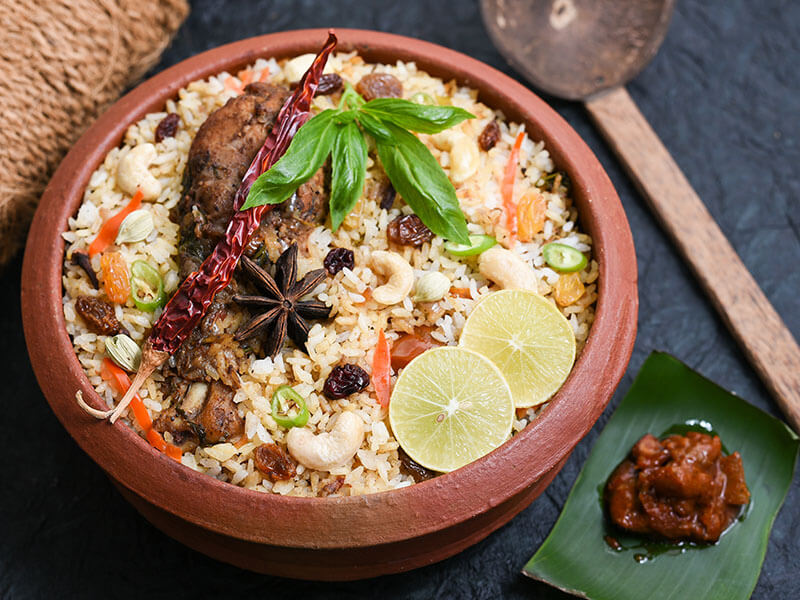
What’s Special About Southern Indian Foods?
Southern is another area with unique cuisine for you to uncover. Most noticeably, the region has many coastal states that offer a diverse range of seafood. In addition, the South Indian climate is more predictable than Northern India.
Typically, the South has humid and hot conditions spanning a vast area. However, the region is also blessed with a lot of rain, making up for a diverse amount of vegetables and fresh fruit. Despite having a wide range of seafood, Andhra cuisine is also famous for its vegetarianism.
Interestingly, the Telugu state of South India also houses the biggest population of meat in the country. In terms of flavor, Southerners are proud to have the spiciest dishes in India, thanks to the contribution of the Andhra Pradesh and Telangana cuisines.
Overall, with the influence of the two states above, South Indian cuisine has unique tangy and hot characteristics in many dishes.
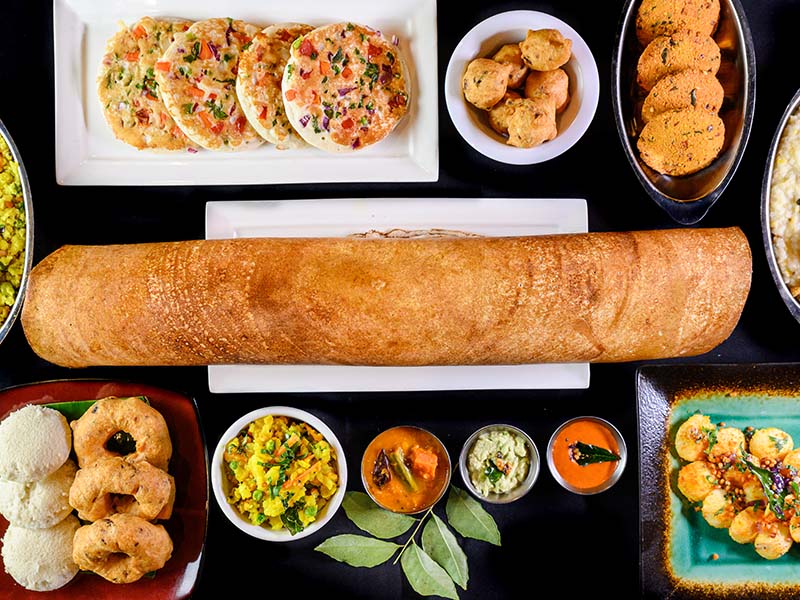
Differences And Similarities Of Northern And Southern Foods
If you have the chance to uncover the cuisine of Northern and Southern, you will soon realize that these two regions have different interpretations of ingredients. Here are a couple of details that you need to know.
Similarities

Across India, the cuisine mainly features vegetable oil from canola or sunflower in many dishes, regarding the cuisine. As for ghee, this clarified butter only appears during special occasions, like making dishes for Indian holidays.
Both South and North India possess curries; however, the spiciness and flavors may vary between states. In addition, you may also notice that every Indian cuisine often uses rice, potatoes, peas, beans, lentils, and cauliflower in their cooking.
Another noticeable feature in any Indian cuisine is the massive amount of spices. No matter what Indian cuisine you’re mentioning, you are guaranteed to get around five or more spices in each dish.
You should be more confident with Indian spices after this simple guide.
Dissimilarities
Whenever people place North and South cuisines on the table for comparison, you need to know these key differences. Although you may say the North has influences from some Pakistani specialties, that is only half of the story.
1. Staple Ingredients
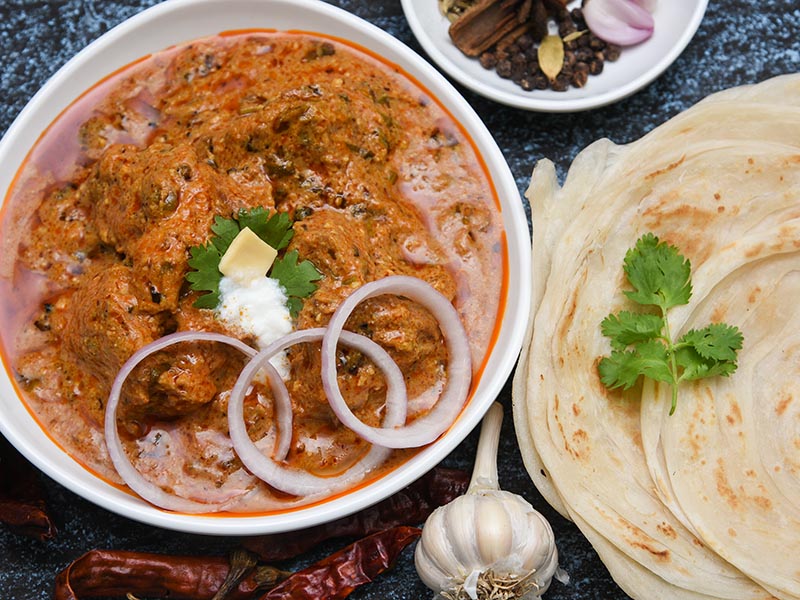
In the North of India, the population favors bread over anything else. You can easily find various types of bread in the North like Khobar Roti, Naan, Bhatura, and more. These kinds of bread usually appear as street foods to accompany curry or viscous sauces.
In addition, locals prioritize using wheat flour because it’s compatible with various bread recipes. Sometimes, people may use cornmeal, but it’s only for some specific recipes. Furthermore, rice is also the second-best option for many Northern delicacies.
As for the South, the population mainly revolves around rice and lentils. The rice is usually the long-grain variety with a dry and fluffy texture. Another popular form of consuming rice is to turn it into Idlis (a flatbread), a steamed rice cake to pair with other spicy specialties. (1)
The Daal is the most popular form of lentils in India, including in the southern part of the country. Many Southern delicacies rely heavily on Daal as the base. Surprisingly, the lentils also create a distinct bitterness for Southern Indian cuisine.
2. Spice Combination
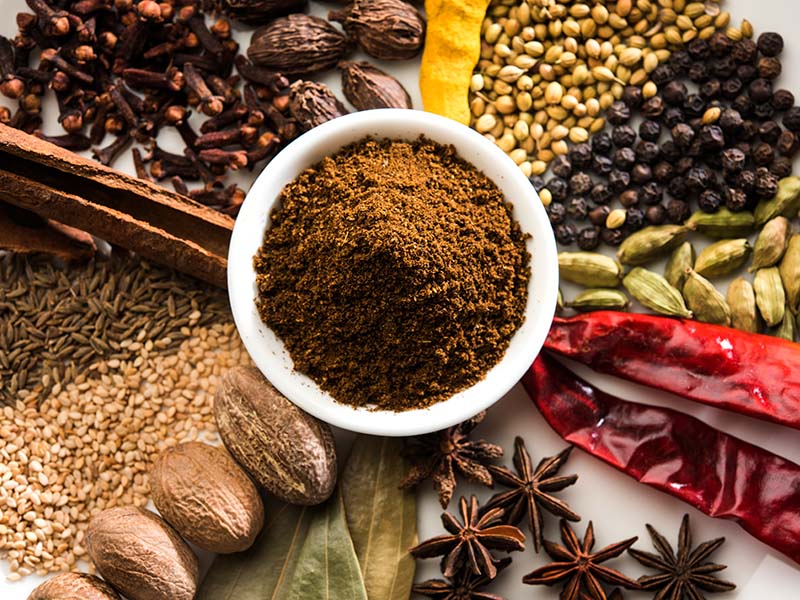
Although both North and South India possess a lot of spices to make their specialties more flavorful, each region has a unique favorite spice mix. Northerners usually combine dried fenugreek and amchoor (dried mango powder) for a milder spice mix than the South.
The North is leaning toward infusing meals with Garam Masala (toasted peppercorn, cardamom, cloves, and cinnamon combination). Garam Masala usually comes in powder and has a brown color.
The spices add a significant fragrance and multiple flavor layers to any recipe. In addition, each state has a unique blend of Masala.
On the other hand, the Indian Southerners prioritize using Sambar powder (Huli Pudi). The condiment originates from Andhra Pradesh. In South India, people usually have a lot of spicy food to induce sweating to cool off their bodies.
In the South, locals often incorporate curry leaves with coriander seeds, red chilies, and cumin to make Sambar powder. The yellowish-brown seasoning mix provides many Indian Southern side dishes with an intense curry flavor. (2)
Take a peek at how you can recreate homemade Garam Masala.
3. Herbs

In terms of herbs, both areas use different herbs to set the tone or as a final garnish to the dish. The South features whole curry leaves into many recipes to infuse a heavy curry flavor. For the sourness, the residents love using tamarind to achieve the effect.
The North is a bit different as they often sprinkle in chopped coriander to add a refreshing taste to the dish. Many Northern Indian specialties usually have a licorice taste thanks to the addition of fennel.
In short, the difference in herbs creates a distinct flavor for each dish, making it stand out as a representative of the North and South cuisine.
4. Favorite Beverages

It’s common for many cuisines worldwide to include drinks and savory and spicy dishes. This fact also applies to India, but each cuisine region has its favorite Indian beverages. The locals of South India typically choose Chicory coffee, a specialty drink in many states.
Instead of making the refreshment with coffee beans, people use ground Chicory root to create the drink. Despite not having any caffeine kick, the root still provides a coffee-like flavor. Chicory coffee treats its consumers with a rich flavor with slightly nutty and earthy flavors.
As for the Northern part of India, Chai tea is the most common representative. The full name of the drink is Masala Chai, a mixture of black tea with milk and spices. The tea has a brown color, and locals usually have it warm.
Overall, the South often has Chicory coffee after meals, while the North specializes in consuming Masala Chai.
Masala Chai is unskippable if you’re in the North of India.
5. Main Dish
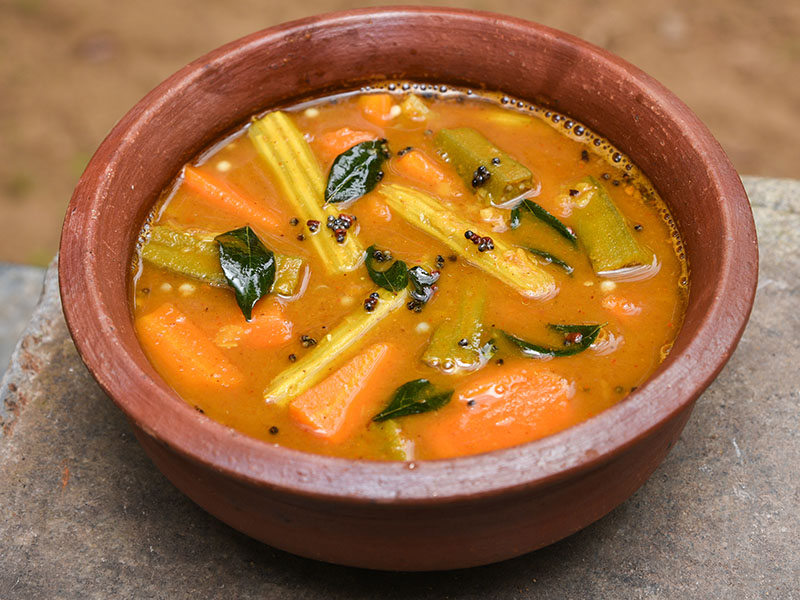
Although both South and North Indian cuisine have curry and stew on their menu, the difference is relatively obvious. The North favors curry but with a thick consistency from using various dairy products as a base. It’s mainly because Northerners usually use Naan to scoop the curry.
Many North Indian curries rely on a combination of garlic with ginger, tomatoes, and onions. Sometimes, people even make use of nuts or seeds. Furthermore, Northerners’ menu tends to feature lamb or chicken in the form of curries and kebabs.
In return, the thickness of Southern stew stock is the polar opposite of the Northern curry. Southern stews are often watery since people often use coconut milk as the base.
The runny stew is usually drizzled directly over the rice to enjoy the spicy-tangy flavor of roasted spices and coconut. Moreover, Southerners orient their menu around various vegetables for a vegetarian diet.
6. Spiciness
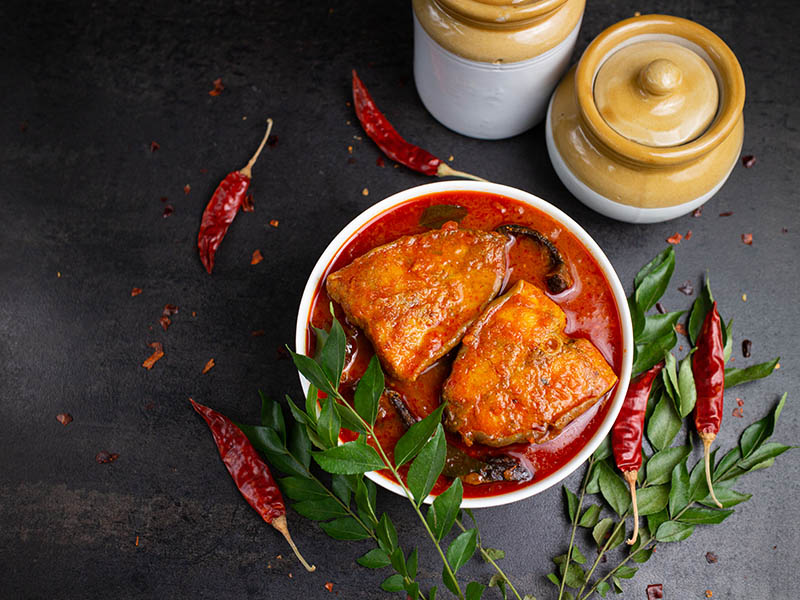
North India displays a milder flavor while using Masala as a seasoning for many recipes. Alternatively, South Indian cuisine characterizes an intense spiciness ranging in many delicacies.
Many speculate the South has spicy foods because of the tropical cultural influences.
Health Benefits Between South And North Indian Cuisine
It depends on what dishes you are considering. In general, many believe the South is healthier as it has less involvement in dairy products. Furthermore, South Indian cuisine provides you with more protein thanks to the various seafood options.
Surprisingly, India has up to 40% vegetarian dishes, which makes many delicacies a healthy choice for you. Instead of using yogurt or ghee like the Northerners, South Indians typically incorporate coconut products into their recipes.
Most often, the Northerners also use fat as an additive to their cooking, while Souther Indians aim at preserving the flavors of vegetables. However, both cuisines feature a decent amount of carbs in the diet, with rice and bread the main part of every meal.
In short, the South is better than North India regarding healthy diets. But you also need to remember that both regions consume a lot of carbs in their daily meals. The choice is up to you.
3 Northern Indian Dishes To Make At Home
I know you’re excited to uncover more Northern Indian dishes, so here are some of the most iconic representatives. You can recreate it right at home or maybe use these recipes to spark ideas for your next meal.
1. Lachha Paratha (Layered Bread)
Lachha Paratha is one of the most iconic Northern specialties; it’s a flatbread that people usually pair with curries. The bread is straightforward to make with a circular shape and char marks from the grilling process.
The bread batter consists of wheat flour with carom seeds, salt, and water. Locals usually knead the dough until it is smooth before rolling it into a thin disc with a thin layer of ghee. Ideally, you want to serve Paratha hot with a savory main dish.
Discover how to make Lachha Paratha from your lovely kitchen.
2. Rajma Dal (Red Kidney Bean Curry)
When it comes to North Indian curry, you can’t overlook Rajma Dal, a recipe that takes red kidney beans as the center of attention. This hearty meal is an ideal addition to your vegetarian diet as it has no meat.
Before you plan to cook up Rajma Dal, I suggest soaking the kidney beans for around 8 hours to soften them. Furthermore, you may want to use a pressure cooker to speed up the cooking process. The curry has a beautiful red color from the tomatoes and red chili powder.
Of course, it’s not a Northern Indian dish without featuring Garam Masala to set the tone for the broth. In addition, you also have the option to include heavy cream for a creamy mild curry. Once you finish cooking Rajma Dal, the beans should be soft and flavorful.
3. Fish Amritsari
Fish Amritsari originates from the Amritsari city in the North of India. The delicacy is deep-fried fish that appear as the area’s street food. The fish is super crispy and coated with a layer of decadent spices.
The key to success at fish Amritsari lies in the batter because you need a combination of wheat flour, Besan (chickpea flour), and turmeric powder. If you don’t know, adding turmeric helps the batter get a beautiful golden color.
The fish should have a crunchy texture with flavor from the chili powder seasoning. The dish is a must-try whenever you’re traveling to Amritsari city.
Try out this fish Amritsari recipe to bring the Indian flavor into your house.
3 Southern Indian Specialties For Your Kitchen
As always, you may find the following Southern dishes intriguing to test out in your kitchen. Don’t worry about the signature spiciness of these Southern specialties, as you can always customize the spices to your will.
1. Chicken 65
The first time I heard this dish’s name, I thought it was a type of liquor. Chicken 65 is a fried-chicken recipe originating from Chennai state in India. Many believe the dish first appeared in the Buhari hotel as a unique Indian starting course or a snack.
For this recipe, locals marinate the chicken in various spices. In addition, people even infuse the chicken with some curry leaves for that hint of curry flavor. After deep-frying the chicken, you may even want to sprinkle it with extra spices to enhance the overall taste.
Finally, chicken 65 is not complete without sauteing with chili powder. Stir-fry the chicken on high heat and serve your chicken 65 hot.
Learn how to bring the spiciness of South Indian cuisine into your meal with this chicken 65 recipe.
2. Sambar (South Indian Lentil Soup)
Sambar is one of the iconic options of South Indian cuisine that uses Sambar seasoning to set the tone for the dish. The soup is a simple combination of lentils with various vegetables that you like.
For a smooth lentil soup experience, I suggest pressure-cooking the lentil first before incorporating the vegetables like tomatoes, drumsticks, and carrots. Thanks to the addition of tamarind, the Sambar soup gets a light note of sourness.
Ideally, the vegetables in Sambar should hold their shape and not become mushy. For serving, you can pair Sambar with rice, Dosa (thin fermented batter), or Idli (Indian rice pancake).
3. Appam (South Indian Rice Flour Pancake)
For the final representative, I’d like to bring you Appam, a light delicacy of the Kerala state. The residents often feature Appam as part of their morning meal with chutney, chicken, and curries. Better yet, the batter requires no fermentation.
Because of the rice flour base, the Appam is usually white. Locals combine cooked rice and shredded coconut to get a hint of coconut flavor. Furthermore, you want to add baking powder for the dough to ferment properly.
Once the batter reaches a desirable consistency, pour a thin layer over the pan to create your first Appam. The dough should often have a fluffy texture with a light sweetness.
Uncover the secret to making Appam from simple ingredients.
FAQs
After handling all the information, you must have had some questions remaining. I hope this small FAQs section is enough to meet your curiosity. If you have further questions regarding the topic, let me know in the comment section.
Will You Go For North Or South Indian Food On Your Next Meal?
The North and South of India have many differences in culture and cuisines. Each state of the Indian region even has small communities with unique cooking styles that create distinct features for the region.
I hope you find this comparison intriguing and useful. If you want to share this article, be my guest because it helps people understand more about Indian cuisine. In addition, you may even share your opinions about your Indian cuisine experience.

References
- En.wikipedia.org. 2022. South Indian cuisine – Wikipedia.
- Mea.gov.in. 2022.
